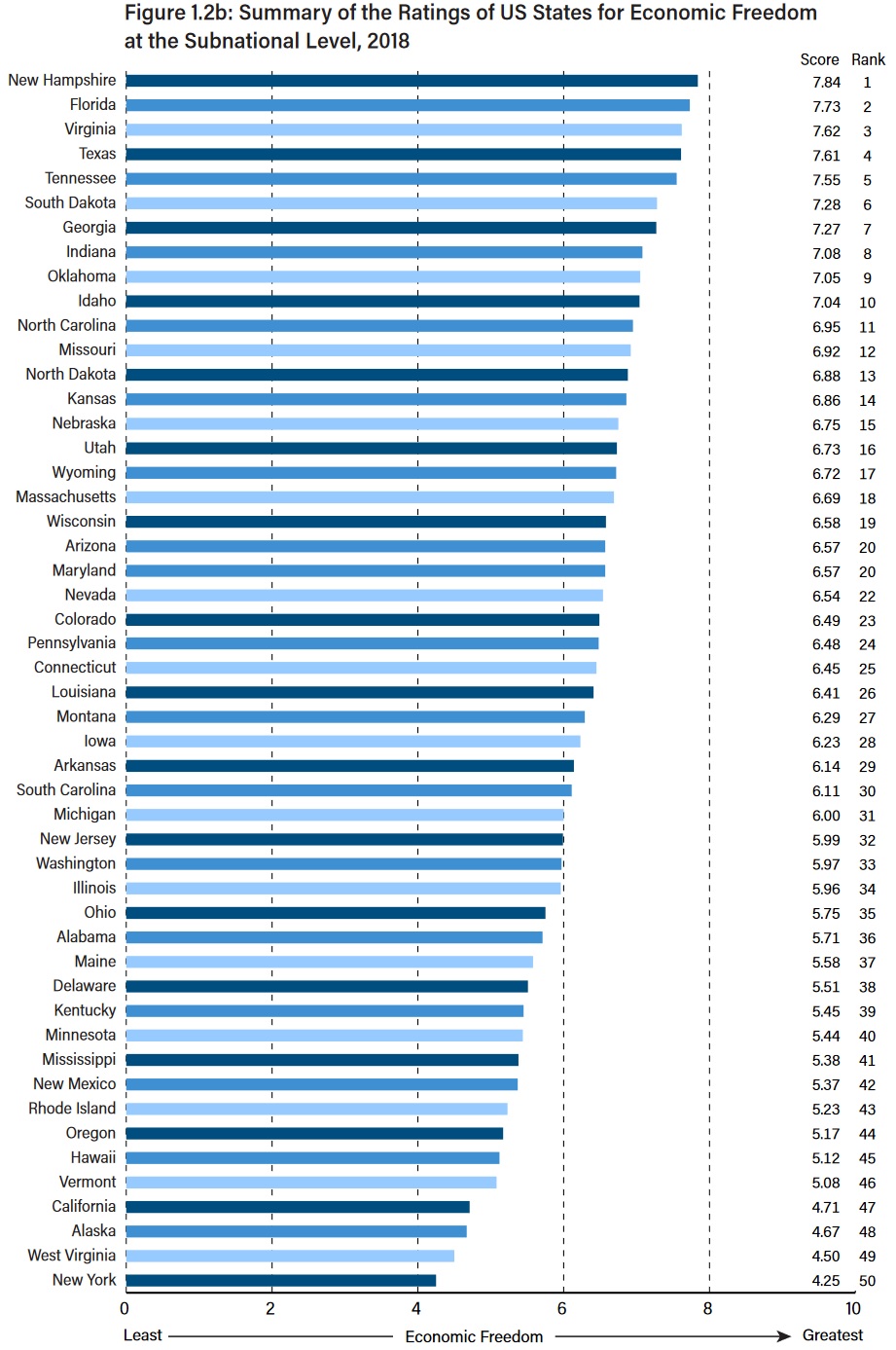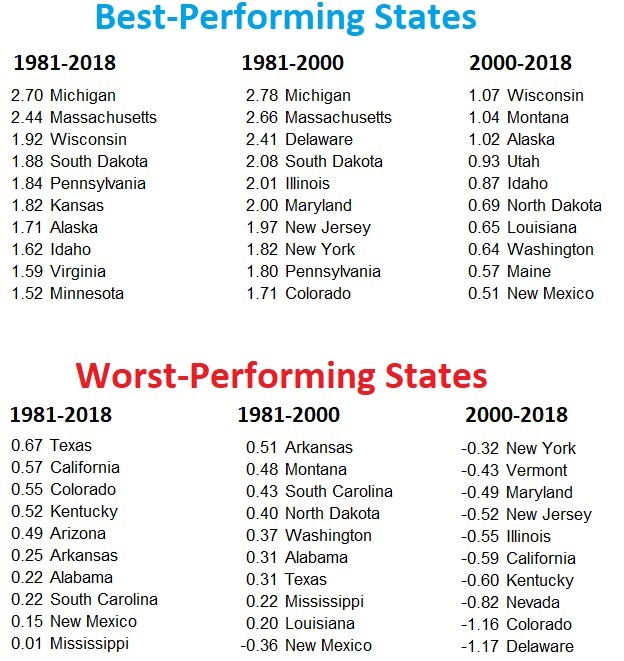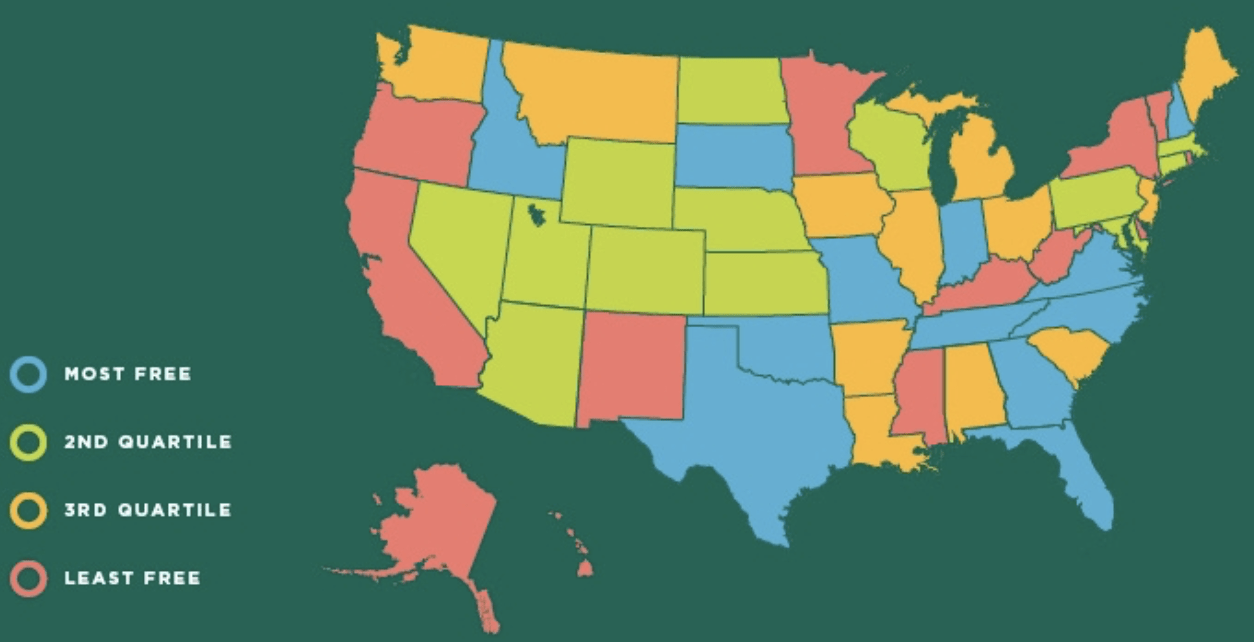| by Dan Mitchell and reproduced with permission |
According to the Fraser Institute’s Economic Freedom of North America, the most economically free jurisdiction in North America used to be the Canadian province of Alberta.
But Alberta then slipped and New Hampshire claimed the top position. And, according to the the 2020 edition of Economic Freedom of North America, the Granite State is still the best place to live.
But since most of my readers are from the United States, let’s focus just on American states, and specifically look at how they rank based on the policies they control.
On this basis, you can see that New Hampshire is in first place, followed by Florida, Virginia, Texas, and Tennessee (if you’re looking for a common thread, four of the five have no state income tax).

Here are some highlights from the Fraser Institute’s summary.
Economic Freedom of North America 2020…measures the extent to which…individual provinces and states were supportive of economic freedom… There are two indices: one that examines provincial/state and municipal/local governments only and another that includes federal governments as well. …The all-government index includes data from Economic Freedom of the World… The top jurisdiction is New Hampshire at 8.16, followed by Florida and Idaho at 8.10 , then Wyoming (8.09) and Utah (8.08). Alberta is the highest ranking Canadian province, tied for 9th place with a score of 8.06. The next highest Canadian province is British Columbia in 27th at 7.98. …The highest-ranked Mexican state is Jalisco with 6.70… The lowest-ranked states in the United States are Delaware at 7.72 in 56th place, following Rhode Island (7.76 in 54th) and New York (7.77 in 53rd).
As I noted above, I think it’s especially instructive to see how jurisdictions compare when looking at the policies they control.
Here’s what the study says about the subnational index.
For the subnational index, Economic Freedom of North America employs 10 variables for the 92 provincial/state governments in Canada, the United States, and Mexico in three areas: 1. Government Spending; 2. Taxes; and 3. Labor Market Freedom. …There is a separate subnational index for each country. In Canada, the most economically free province in 2018 was again Alberta with 6.61, followed by British Columbia with 5.98… The least free by far was Quebec at 2.84… In the United States, the most economically free state was New Hampshire at 7.84, followed by Florida at 7.73. …(Note that since the indexes were calculated separately for each country, the numeric scores on the subnational indices are not directly comparable across countries.) The least-free state was New York at 4.25… In Mexico, the most economically free state was Jalisco at 6.57.
One obvious takeaway is to avoid Quebec and New York.
And almost all of Mexico as well.
One of the many great things about the Fraser Institute is that they are very good at sharing their data.
And, because I was curious to know what states are moving in the right direction and wrong direction, I downloaded the excel file so I could make the relevant calculations.
Here are the numbers, showing the both the overall shift since 1981 as well as the data for 1981-2000 and 2000-2018.

The good news is that every single state has more economic freedom today that it had in 1981. Michigan and Massachusetts enjoyed the biggest increases over the past four decades, though both of them still plenty of room for upward improvement.
Looking at the 1981-2000 and 2000-2018 periods, there was much more reform at the end of last century than there has been at the beginning of this century. So maybe the “Washington Consensus” influenced American states as well as foreign nations.
I realize I’m a dork about such things, but I was especially interested to see that some states (Delaware, Illinois, Maryland, New Jersey, New York, and Colorado) were very good performers in 1981-2000, but fell to the bottom group in 2000-2018.
By contrast, other states (Montana, North Dakota, Washington, and New Mexico) jumped from the bottom 10 to the top 10.
P.S. Texas ranked #1 in 1981, and by a comfortable margin, so even though it was among the bottom-10 performers for 1981-2018, it still ranks #4 overall for good economic policy.
P.P.S. Colorado dropped from #8 in 1981 to #23 in 2018, which may be a sign that the pro-growth impact of TABOR is more than offset the anti-growth impact of all the Californians that have moved to the state.
